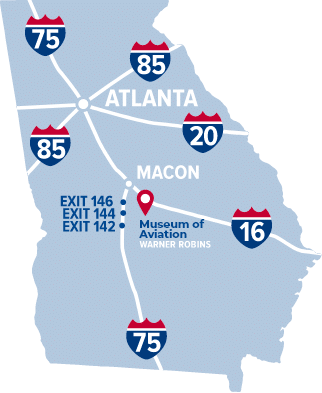The Army purchased a series of light aircraft for observation in 1948 and 1949, among them was the Aeronca L-16 Grasshopper. These were the post-war Model 7BC Aeronca Champions and had few changes from the basic L-3 design used in WWII. Most were allocated to the Civil Air Patrol in the mid-1950s and 509 L-16As were manufactured, of which 376 were produced originally for the National Guard. The L-16A was manufactured with Continental O-190-1 engines which produced 85 hp. A heavier model the L-16B, of which 100 were built, had 90 hp Continental O-205-1 engines and dorsal fins.
During WWII Robins AFB served as a repair and support base for L-3, the predecessor to the L-16, operating in the Southeast. After the war, L-16s frequently operated from Robins while serving with the USAF, National Guard and Civil Air Patrol. The aircraft on display, suspended in the Museum gift shop, is a civilian aircraft acquired by the Museum in 1991 for display. It is marked in the colors of the Civil Air Patrol when it used L-16s for search and rescue missions throughout the United States.





